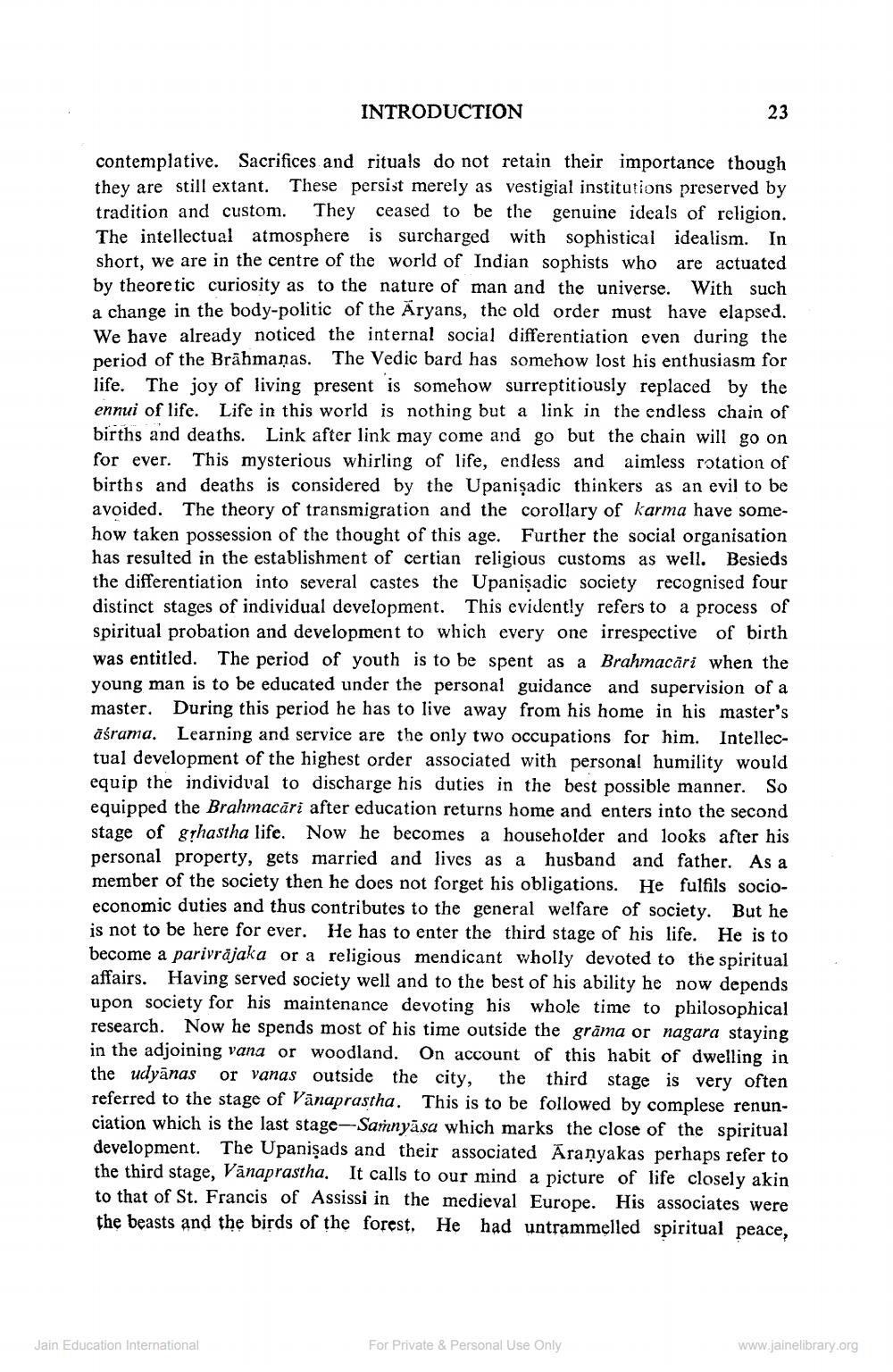________________
INTRODUCTION
23
contemplative. Sacrifices and rituals do not retain their importance though they are still extant. These persist merely as vestigial institutions preserved by tradition and custom. They ceased to be the genuine ideals of religion. The intellectual atmosphere is surcharged with sophistical idealism. In short, we are in the centre of the world of Indian sophists who are actuated by theoretic curiosity as to the nature of man and the universe. With such a change in the body-politic of the Aryans, the old order must have elapsed. We have already noticed the internal social differentiation even during the period of the Brāhmaṇas. The Vedic bard has somehow lost his enthusiasm for life. The joy of living present is somehow surreptitiously replaced by the ennui of life. Life in this world is nothing but a link in the endless chain of births and deaths. Link after link may come and go but the chain will go on for ever. This mysterious whirling of life, endless and aimless rotation of births and deaths is considered by the Upanişadic thinkers as an evil to be avoided. The theory of transmigration and the corollary of karma have somehow taken possession of the thought of this age. Further the social organisation has resulted in the establishment of certian religious customs as well. Besieds the differentiation into several castes the Upanişadic society recognised four distinct stages of individual development. This evidently refers to a process of spiritual probation and development to which every one irrespective of birth was entitled. The period of youth is to be spent as a Brahmacäri when the young man is to be educated under the personal guidance and supervision of a master. During this period he has to live away from his home in his master's āśrama. Learning and service are the only two occupations for him. Intellectual development of the highest order associated with personal humility would equip the individual to discharge his duties in the best possible manner. So equipped the Brahmacāri after education returns home and enters into the second stage of grhastha life. Now he becomes a householder and looks after his personal property, gets married and lives as a husband and father. As a member of the society then he does not forget his obligations. He fulfils socioeconomic duties and thus contributes to the general welfare of society. But he is not to be here for ever. He has to enter the third stage of his life. He is to become a parivräjaka or a religious mendicant wholly devoted to the spiritual affairs. Having served society well and to the best of his ability he now depends upon society for his maintenance devoting his whole time to philosophical research. Now he spends most of his time outside the grāma or nagara staying in the adjoining vana or woodland. On account of this habit of dwelling in the udyānas or vanas outside the city, the third stage is very often referred to the stage of Vānaprastha. This is to be followed by complese renunciation which is the last stage--Samnyāsa which marks the close of the spiritual development. The Upanişads and their associated Araṇyakas perhaps refer to the third stage, Vänaprastha. It calls to our mind a picture of life closely akin to that of St. Francis of Assissi in the medieval Europe. His associates were the beasts and the birds of the forest. He had untrammelled spiritual peace,
Jain Education International
For Private & Personal Use Only
www.jainelibrary.org




